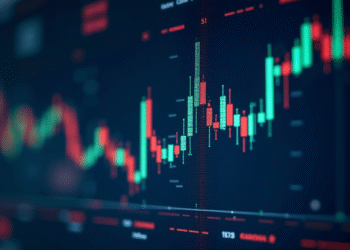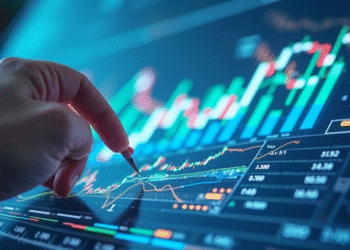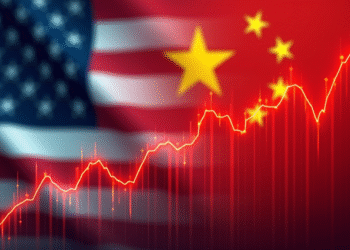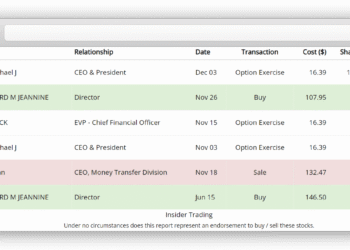Dollar gains have become a focal point in the financial markets, particularly as reduced Fed rate cut expectations influence global trading strategies. Recent economic indicators, like the unexpected increase in U.S. job openings and a positive ISM services report, have led to a notable rise in the dollar index, showcasing its resilience. These developments have sparked a renewed interest in the dollar, pushing the demand for dollar liquidity higher, especially amid stock market vulnerabilities. Additionally, hawkish commentary from Richmond Fed President Barkin has reinforced this trend, signaling potential firmness in U.S. monetary policy. As the dollar strengthens, the precious metals market is feeling the impact of these shifts, with investors closely monitoring how U.S. economic data continues to shape the landscape of currency trading.
The recent strengthening of the U.S. dollar can be attributed to various factors, including shifting expectations regarding Federal Reserve policies. As market participants recalibrate their views on interest rates, the dollar index has shown a notable uptick, reflecting a broader trend in currency markets. Enhanced U.S. economic performance, highlighted by robust job openings and favorable service sector activity, has played a crucial role in bolstering confidence in the dollar. Meanwhile, the swap market is responding to these dynamics, adjusting predictions for future Fed actions. As these developments unfold, the interplay between the dollar and precious metals becomes increasingly significant, creating a complex trading environment for investors.
Understanding Dollar Gains on Fed Rate Cut Expectations
The recent gains of the dollar index are closely tied to the shifting expectations surrounding Federal Reserve interest rate cuts. As the economic data from the U.S. revealed stronger-than-anticipated results, particularly the November JOLTS job openings and the ISM services index, the market has adjusted its outlook. The rise in job openings to 8.098 million, surpassing forecasts, indicates a robust labor market, which could lead the Federal Reserve to maintain a tighter monetary policy. Consequently, this has diminished the likelihood of a rate cut in the near term, leading to an appreciation of the dollar against major currencies.
Furthermore, the comments from Richmond Fed President Barkin reinforced the market’s perception of a hawkish stance from the Fed. His assertion that the central bank would need to adopt a firmer approach if inflationary pressures persist has created an environment where the dollar can thrive. With only a 5% chance of a rate cut predicted for the upcoming FOMC meeting, the dollar’s strength is expected to continue, particularly against currencies that are more sensitive to rate changes, such as the euro and yen.
The Impact of U.S. Economic Data on Dollar Strength
U.S. economic data plays a critical role in determining the strength of the dollar. Recent indicators have shown that the economy is on a solid footing, which is pivotal for dollar gains. The unexpected rise in job openings signals not only a recovering job market but also the potential for increased consumer spending. This positive economic momentum supports the Federal Reserve’s objective to keep inflation in check, thereby influencing its interest rate policy. As a result, the dollar has benefitted from this optimistic outlook, leading to a rise in the dollar index.
Moreover, the latest ISM services index, which exceeded expectations, highlights that the services sector remains a key driver of economic growth. This sector contributes significantly to the GDP, and its strength reinforces the case for the Fed to maintain or even raise interest rates rather than cutting them. As traders react to these data points, the dollar is likely to remain strong, especially as the market prices in a low probability of imminent rate cuts.
The Influence of the SWAP Market on Currency Dynamics
The SWAP market plays an essential role in shaping currency dynamics, particularly for the dollar. As expectations around interest rate adjustments fluctuate, the SWAP market reflects these changes through the pricing of currency swaps. The recent anticipation of fewer Fed rate cuts has increased demand for dollar liquidity, pushing the dollar index higher. Following the positive economic reports, traders are recalibrating their positions in the SWAP market, leading to an increase in the dollar’s value.
Additionally, the relationships between various currencies in the SWAP market can amplify the effects of U.S. economic data. For instance, as the dollar gains strength due to hawkish signals from the Fed, currencies such as the euro and yen may experience depreciation. This dynamic is crucial for investors and traders who are looking to hedge against currency risks or speculate on future movements. Understanding these SWAP market interactions is vital for anyone looking to navigate the complexities of foreign exchange trading.
Precious Metals Market Response to Dollar Fluctuations
The precious metals market is often inversely correlated with the performance of the dollar, and recent trends confirm this relationship. As the dollar strengthens due to reduced Fed rate cut expectations, precious metals like gold and silver have seen fluctuations in demand. The increase in T-note yields, driven by positive U.S. economic data, tends to diminish the allure of non-yielding assets like gold, leading to a moderate pullback in prices even as geopolitical tensions provide some support.
However, the demand for precious metals is also influenced by global economic conditions and investor sentiment. The recent news of China expanding its gold reserves has provided a temporary boost to gold prices, while silver has benefited from industrial demand. Yet, with stronger-than-expected U.S. economic indicators, the precious metals market may continue to face pressure as investors shift their focus back to the dollar and U.S. assets that offer higher returns.
Eurozone Economic Data and Its Impact on the Dollar
The economic landscape in the Eurozone has a substantial impact on the dollar’s performance, especially given the ongoing concerns surrounding inflation and interest rate policies. Recent data from the Eurozone indicated a rise in inflation expectations, which initially bolstered the euro against the dollar. However, as the dollar gained strength from positive U.S. economic indicators, the euro surrendered its gains, reflecting the market’s prioritization of U.S. data over Eurozone developments.
The interplay between the euro and dollar highlights the importance of relative economic strength in determining currency value. With the European Central Bank signaling a potential rate cut, the dollar’s position is further solidified as investors flock towards perceived safety and yield opportunities offered by the dollar. This dynamic continues to shape trading strategies and investment decisions as market participants analyze both U.S. and Eurozone economic reports.
The Role of Geopolitical Risks in Currency Movements
Geopolitical risks often act as catalysts for significant movements in currency values, including the dollar. Recent events, such as the intensification of conflicts in regions like Ukraine and Syria, have heightened demand for safe-haven assets, including the dollar. As tensions rise, investors tend to seek stability in the dollar, leading to its appreciation against other currencies that may be more volatile during such crises.
Moreover, the dollar’s status as a global reserve currency means that it often benefits during times of uncertainty. The demand for dollar liquidity increases, particularly in the context of global trade and finance. As geopolitical risks loom, market participants must remain vigilant, as these external factors can quickly shift the balance, influencing both the dollar’s strength and the broader economic landscape.
Forecasting Future Dollar Movements
As we look ahead, forecasting future movements of the dollar will largely depend on the interplay of economic indicators and central bank policies. The Federal Reserve’s commitment to its inflation target and the absence of immediate rate cuts suggest that the dollar may continue to gain strength in the short term. Market participants will be closely monitoring upcoming economic data releases, particularly regarding employment and inflation, as these will provide further insights into the Fed’s policy direction.
Additionally, external factors such as global economic trends and geopolitical developments will also play a crucial role in shaping the dollar’s trajectory. As the economic landscape evolves, traders and investors must remain adaptive to these changes, using tools like technical analysis and economic forecasts to navigate the complexities of currency trading. The dollar’s future movements will be a reflection of both domestic economic health and international market dynamics.
Navigating Dollar Investments in a Volatile Market
Investing in the dollar during periods of volatility requires a strategic approach. With the current economic indicators suggesting a resilient U.S. economy, investors may find opportunities in dollar-denominated assets. However, understanding the nuances of market sentiment, especially in light of fluctuating interest rate expectations and geopolitical tensions, is crucial for making informed investment decisions.
Moreover, diversifying investments can help mitigate risks associated with dollar fluctuations. Investors should consider incorporating a mix of assets, including foreign currencies and commodities, to balance potential losses from dollar strength. Keeping a keen eye on macroeconomic trends and central bank communications will further enhance an investor’s ability to navigate the complexities of the currency market effectively.
The Interplay Between Trade Deficits and Currency Strength
The U.S. trade deficit is another key factor influencing the strength of the dollar. A widening trade deficit, as seen in the recent increase to -$78.2 billion, can exert downward pressure on the dollar, as it indicates that the country is importing more than it is exporting. This imbalance can lead to concerns about the sustainability of the dollar’s value, particularly in the eyes of foreign investors.
However, the dollar’s strength can also be supported by domestic economic resilience, which can counterbalance the negative implications of a trade deficit. As the U.S. economy demonstrates strength through positive job growth and robust service sector performance, the dollar may maintain its position. Investors must weigh the impact of trade data alongside economic indicators to fully understand the dollar’s potential trajectory.
Frequently Asked Questions
How do Fed rate cut expectations impact dollar gains?
Fed rate cut expectations significantly influence dollar gains. When the market anticipates fewer rate cuts, the dollar tends to strengthen, as seen in recent data. Strong U.S. economic reports, like the November JOLTS job openings, have reduced expectations for rate cuts, leading to a rise in the dollar index.
What is the relationship between the dollar index rise and U.S. economic data?
The dollar index rises in response to positive U.S. economic data. For instance, strong job openings and better-than-expected ISM services reports have bolstered the dollar’s strength, reflecting investor confidence in the U.S. economy, which supports higher dollar gains.
How does the SWAP market affect dollar gains?
The SWAP market plays a crucial role in determining dollar gains by influencing interest rate expectations. An increase in demand for dollar liquidity in the SWAP market often strengthens the dollar, particularly when economic indicators suggest a stable or strengthening U.S. economy.
What recent U.S. economic data contributed to dollar gains?
Recent U.S. economic data, including a significant increase in JOLTS job openings and a rise in the ISM services index, has contributed to dollar gains by diminishing the likelihood of Fed rate cuts and enhancing investor confidence in the dollar’s strength.
How do geopolitical events influence dollar gains and the precious metals market?
Geopolitical events can create volatility in the precious metals market and impact dollar gains. For instance, increasing tensions globally may drive investors toward safe-haven assets like gold and silver, while a strong dollar often leads to a pullback in precious metals prices, as seen recently.
| Key Points | Details |
|---|---|
| Dollar Index Movement | The dollar index rose by +0.30% as T-note yields surged due to positive U.S. job openings and ISM services reports. |
| Fed Rate Cut Expectations | Reduced likelihood of further Fed rate cuts was indicated by hawkish comments from Richmond Fed President Barkin. |
| Impact of Trade Deficit | The U.S. trade deficit widened to -$78.2 billion, affecting Q4 GDP outlook negatively. |
| Job Openings Data | JOLTS job openings increased by +259,000 to a six-month high, contrary to expectations. |
| Euro Movement | EUR/USD fell by -0.38% as the dollar strengthened following better U.S. data. |
| Yen Performance | USD/JPY rose by +0.09% with the yen at a five-and-a-half month low, pressured by higher T-note yields. |
| Gold and Silver Prices | Precious metals saw moderate gains, supported by demand and geopolitical risks, despite dollar strength. |
Summary
Dollar gains have been notable in recent trading sessions, primarily due to reduced expectations for Fed rate cuts following positive economic indicators. The dollar index’s rise reflects strong job openings and services data, indicating a resilient U.S. economy. Furthermore, hawkish commentary from Fed officials has bolstered confidence in the dollar’s strength, diminishing concerns over inflationary pressures. As the market adjusts to these developments, the outlook for dollar gains remains optimistic.













